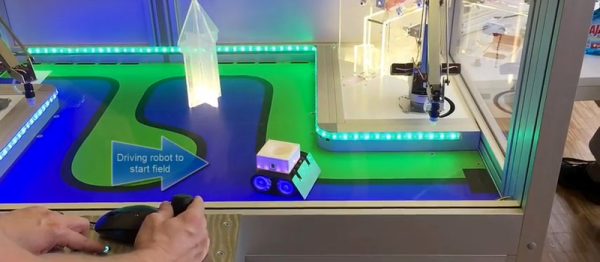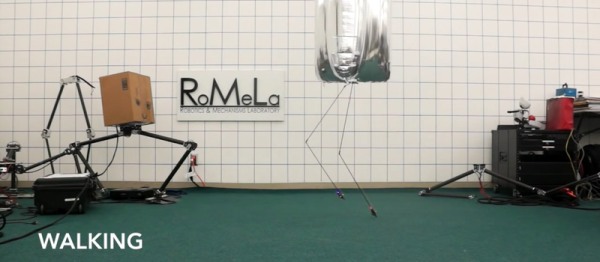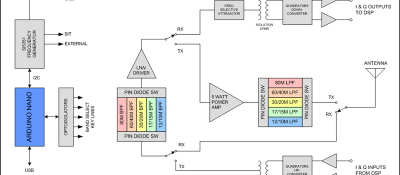If you aren’t already living on the spacecraft Discovery One, you may not have HAL listening to your every voice command. If that’s the case for you, as it is for us, you may have to resort to mashing buttons on little black monoliths like a primitive monkey. [Barnr]’s universal remote project, and some black PLA filament, will get you there in no time.
 The remote is based on a nRF24 radios with a PIC to read the button presses. A Raspberry Pi and another nRF24 are listening on the other end. The code that runs either side of the connection is so minimal that both sides fit in the project description. It gets the job done, and it’s easily hackable. And with that, [barnr] can control anything that he can connect up to the Pi without getting up from his campfire.
The remote is based on a nRF24 radios with a PIC to read the button presses. A Raspberry Pi and another nRF24 are listening on the other end. The code that runs either side of the connection is so minimal that both sides fit in the project description. It gets the job done, and it’s easily hackable. And with that, [barnr] can control anything that he can connect up to the Pi without getting up from his campfire.
While [barnr] is shy about his 3D design skills, we think that the box is fantastic. It’s got 3D-printed keycaps for the tactile switches that sit inside, and it’s an easily printed case. Maybe it’s a little blocky and, frankly monolithic, but it gets the job done. Aesthetics are for version 2.0.
When you build something yourself, and it’s not a HAL 9000, you pretty much need a way to control it. It’s no wonder we’ve seen so many projects on Hackaday. If your 2.4 GHz spectrum is too crowded to run a nRF24 remote, you might consider infrared: tiny, tiny, infrared. Or if you want to see the craziest remote that we’ve ever seen, check out this DTMF-over-cellphone build. But if you just want something sweet and minimal that gets the job done, [barnr]’s build is for you.
Thanks [Mikejand] for the tip!






 The
The 











